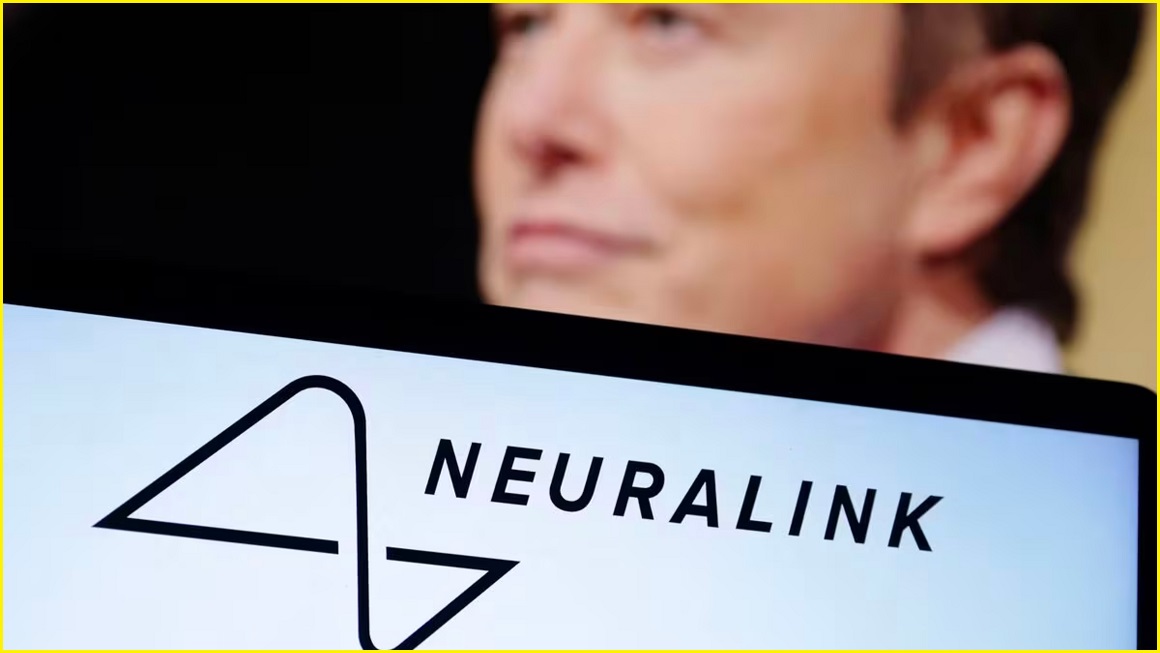Neuralink has successfully implanted its N1 chip into the brain of a human patient, according to owner Elon Musk, marking a milestone for the company that has faced significant criticism in recent years for abusing animal test subjects.
Neuralink is developing brain-computer interface (BCI) technology that would let people with severe paralysis use computers with their thoughts.
This week, the company’s founder Elon Musk posted on his social media platform X (formerly Twitter) saying Neuralink had started clinical trials on humans.
“The first human received an implant from Neuralink yesterday and is recovering well,” he said. “Initial results show promising neuron spike detection.”
N1 is a small coin-sized device comprising a battery, chipset, and set of 1024 tiny electrodes.
A surgeon – one day Neuralink wants its R1 robot to do this job – implants the device onto a patient’s brain tissue where it records neural activity.
The chip then wirelessly transmits these brain signals to a nearby computer or smartphone where they are decoded as “movement intention” via the Neuralink app for the purpose of controlling a cursor.
Enables control of your phone or computer, and through them almost any device, just by thinking.
— Elon Musk (@elonmusk) January 30, 2024
Initial users will be those who have lost the use of their limbs.
Imagine if Stephen Hawking could communicate faster than a speed typist or auctioneer. That is the goal.
Conceptually, Neuralink isn’t breaking any new ground. For decades, researchers have experimented with implanting microelectrode arrays to stimulate or record brain activity to see how BCI technology can help the blind see or give people with limited motor function the ability to use computers.
Commercial viability
Where the Musk-owned company stands out is its focus on commercialisation and scale.
Unlike human surgeons, the R1 robot can be made on a production line and shipped around the world to implant chips in people living with degenerative conditions like motor neurone disease (MND) or who have quadriplegia.
Professor David Grayden, Clifford Chair of Neural Engineering at the University of Melbourne’s Department of Biomedical Engineering, said the Neuralink device is “a bit kinder to the brain” than its technological predecessors.
“It has electrodes that aren’t as stiff, are thinner, and so it is more likely that the brain will cope better with them being implanted,” he told Information Age.
BCI technologies must contend with messy biological hardware (human bodies) that naturally fight off foreign objects like small metal spikes and wires.
Over time the efficacy of implanted devices may degrade as the host responds to their presence in ways that reduce fidelity, like by forming scar tissue.
Worse still, implants can lead to deadly infections and could permanently damage brain tissue, making the technology more prevalent for people who can benefit most from them.
Neuralink knows the risks of brain implants all-too-well.
In early 2022, reports emerged of the company mutilating monkeys with its experiments. It allegedly tried to cover up mistreatment that in led to research monkeys suffering serious distress and in some cases dying from complications related to the implants.
Despite the controversy, in May last year Neuralink got approval to conduct its first clinical trials.
According to an online brochure, the study involves in-home or clinic visits once every two months for 18 months, twice weekly “BCI research sessions”, and then five years of follow-up visits.
Alternative BCI research
Other companies like Synchron, which was spun out of research at the University of Melbourne, are already deep into clinical trials.
Synchron’s signature device, the Stentrode, captures neural activity from a stent in a blood vessel near the brain. The signal quality is less than a direct brain implant, but it comes with fewer potential risks.
In 2021, one of Synchron’s patients sent a series of tweets using nothing but his thoughts.
This kind of BCI technology exists to serve a specific market – people living with disabilities that inhibit their capacity to use computers – and likely won’t have broader consumer impact any time soon, despite Musk’s fantastical claims that one day this technology could let people “save and replay memories”.
Professor CT Lin from the University of Technology Sydney said other approaches to BCI devices, like his team’s experiments combining wearable electroencephalogram (EEG) sensors with large language models, could prove more fruitful for general use.
“The functions of wearable non-invasive BCI have been enhanced a lot recently due to new sensing technologies and deep AI learning algorithms,” Professor Lin told Information Age.
EEG readers are “relatively noisy” compared to brain implants, Professor Lin explained, but they carry fewer ethical and medical implications.










